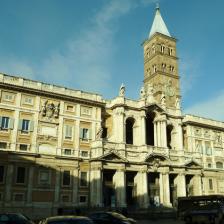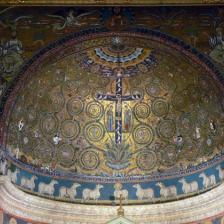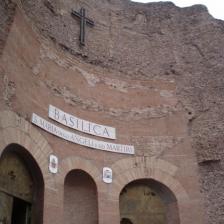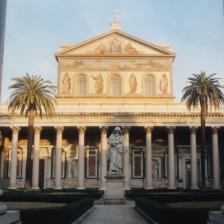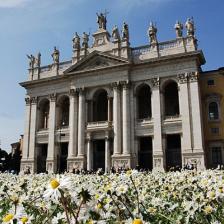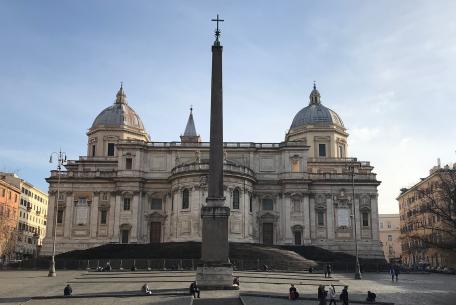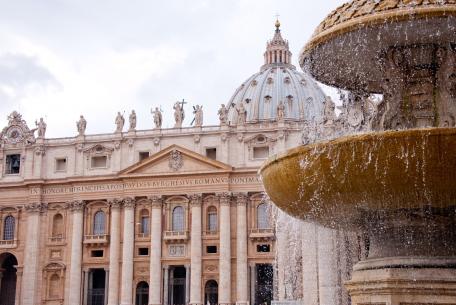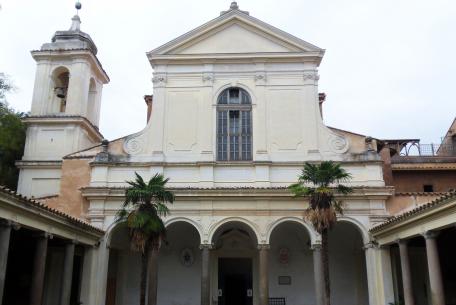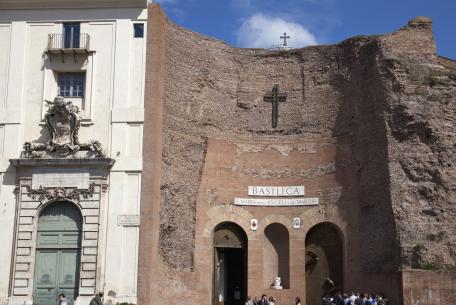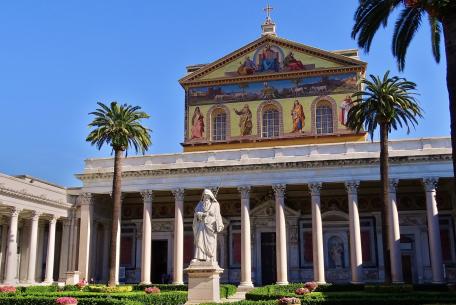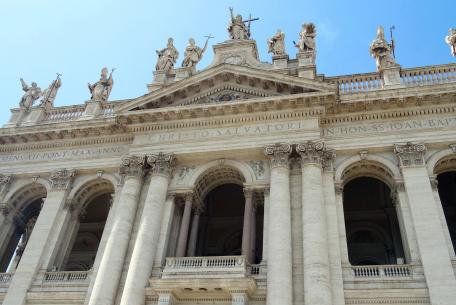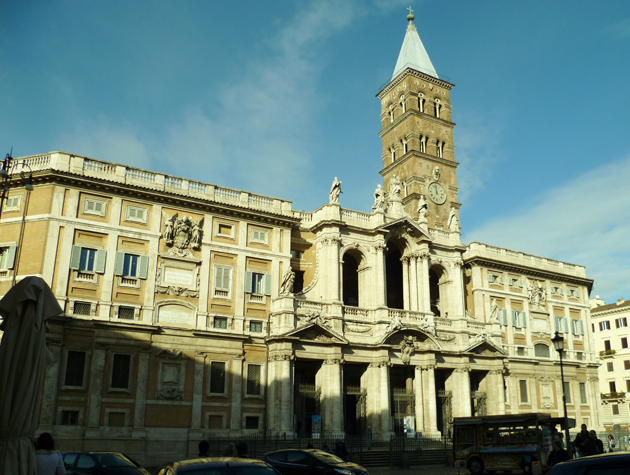
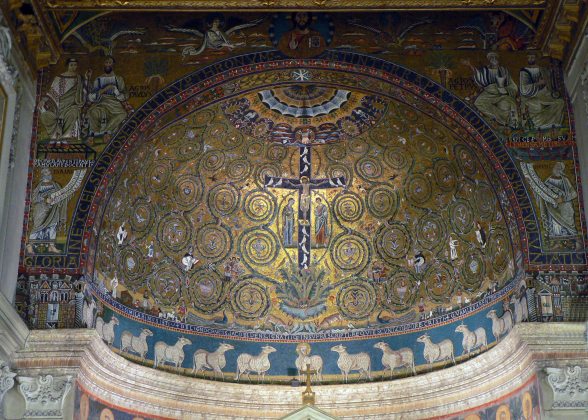
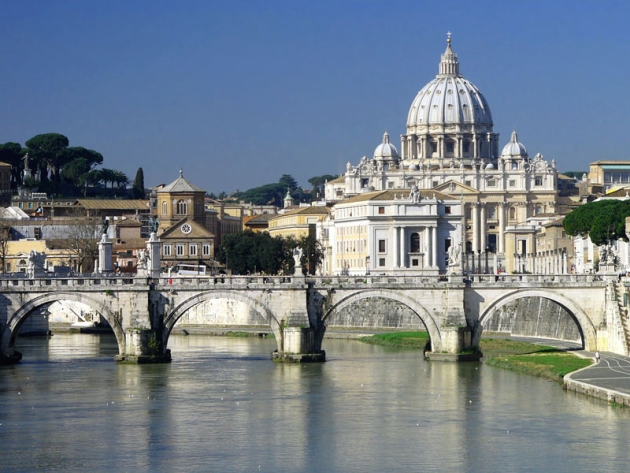
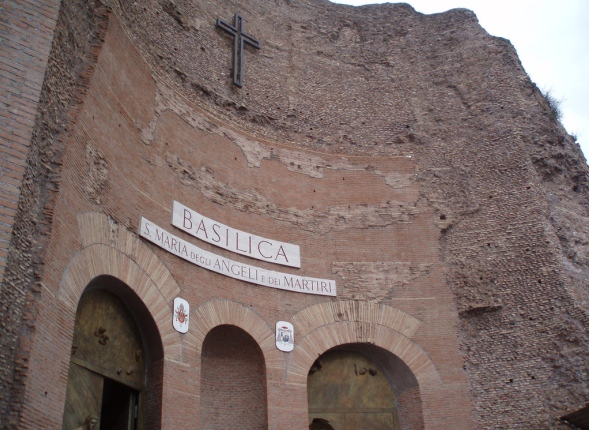
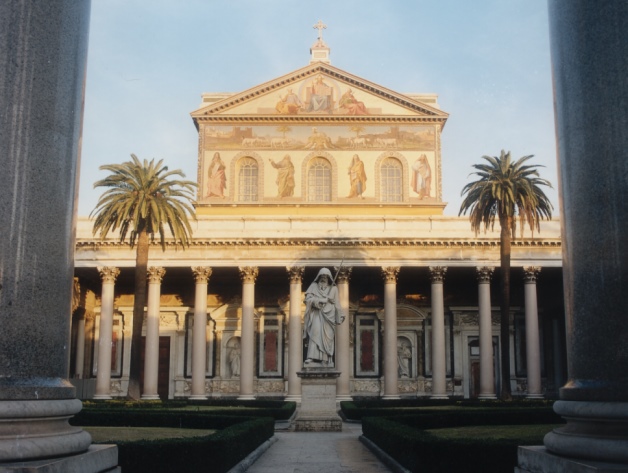
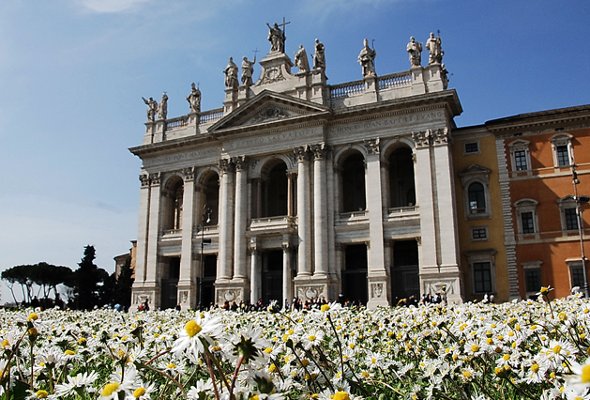
Our itinerary starts from the cathedral of Rome, San Giovanni in Laterano, defined as the “Mother of all churches in the world”. It stands on the same site where Constantine built a basilica around 314, on the land already owned by the noble Lateran family, from which the whole area takes its name.
Not far away, along via di San Giovanni in Laterano, we reach the Basilica of San Clemente, one of the most interesting and ancient basilicas in Rome. It consists of two superimposed churches, built on Roman buildings of the Republican age and the remains of a temple of the god Mithras. In the upper basilica of particular note are the ciborium, the Cosmatesque floor with polychrome marble and the marvellous 12th-century Roman school mosaic depicting "Il Trionfo della Croce" (The Triumph of the Cross); in the frescoes of the Chapel of Santa Caterina, the genius of the 15th-century painter, Masolino da Panicale, explodes in all its glory. Do not miss a visit to the lower basilica and its frescoes, one of which is the "Legenda di Sisinno", bearing in its inscription the first testimony of"volgare Italiano".
Leaving the Colosseum behind us, on our way towards Piazza Esquilino we come across the 15th-century portico of the Basilica di San Pietro in Vincoli. Inside is the splendid Moses by Michelangelo, the colossal sculpture realised in 1513 and initially intended for the never-completed Mausoleum of Julius II.
A few steps and we arrive in front of Santa Maria Maggiore (Papal Basilica of Saint Mary Major), the best-preserved patriarchal basilica. Despite the excellent 18th-century interventions on its exterior, it is the interior that offers the value of its artistic treasures, especially its superb mosaics; the episodes with Stories from the childhood of Jesus dating from the time of Sixtus III and the beautiful mosaic of the apse, a 13th-century work by Jacopo Turriti capture our attention. Besides the sumptuous mosaic art, the basilica keeps magnificent frescoes (The Prophets), the Sistine Chapel, adorned with ancient marble, the Pauline Chapel, with its frescoes by Guido Reni, and the "Nativity" by Arnolfo di Cambio.
Crossing the Tiber, we reach the Basilica of Santa Cecilia in Trastevere, located in the heart of one of the most suggestive districts of Rome. Remarkable are the works preserved in the presbytery, such as the gothic ciborium in black and white marble by Arnolfo di Cambio, the 9th-century mosaic and the marble statue of Santa Cecilia, depicting the martyr's body as seen when her tomb was opened in 1595. The real artistic jewel of the basilica is the Last Judgment by Pietro Cavallini, a mural painting dating at the end of the 13th century.
By walking northwards alongside the Tiber (Lungotevere), we arrive at Piazza San Pietro (St. Peter’s Square), Bernini’s masterpiece and antechamber to the most important architectural complex in the Catholic World. The tiny state of Vatican City holds wonderful works of art and has a deep spiritual meaning, being the heart of Christianity.
Exploring Rome’s Christian legacy should not be restricted to visiting its basilicas. There are, in fact, artistic treasures found in churches often referred to as minor, although in reference to their size. This is precisely the case of the Church of Santa Maria del Popolo in Piazza del Popolo, home to the "Conversion of St. Paul" and the "Crucifixion of St. Peter", two spectacular paintings by Caravaggio, and the altarpiece depicting the Assumption of the Virgin by Annibale Carracci.
Just a few hundred metres away is the Church of Trinità dei Monti with its twin bell towers, creating an image of rare beauty together with the Spanish Steps (Scalinata di Trinità dei Monti) and Piazza di Spagna below. Continuing towards the Quirinale, we come across the Church of San Carlo alle Quattro Fontane (or San Carlino), where Baroque Architect Francesco Borromini’s genius is fully expressed in the undulating façade and elliptic dome.
Two other precious examples of Borromini's inspired genius can be found in the historic centre: the Church of Sant'Ivo alla Sapienza - with the majestic multifoiled dome, the bold spiral cuspidated lantern and its symbols - and Sant'Agnese in Agone in Piazza Navona, with the incomparable elegance of gold and marble.
Nearby, the Church of Sant'Ignazio di Loyola in Campo Marzio is famous for the extraordinary effect of the magnificent trompe-l'oeil "Entry of St. Ignatius into paradise", the illusionistic fresco on the vault by the Jesuit friar Andrea Pozzo; on Corso Vittorio Emanuele II are Chiesa Nuova (Santa Maria in Vallicella), which houses masterpieces by Pietro da Cortona, Rubens and Guido Reni, and Chiesa del Gesù (Mother Church to the Society of Jesus) with works by Giovanni Battista Gaulli - known as il Baciccia - and the sumptuous Chapel of Sant'Ignazio di Loyola by Andrea Pozzo.
 Condividi
Condividi












































